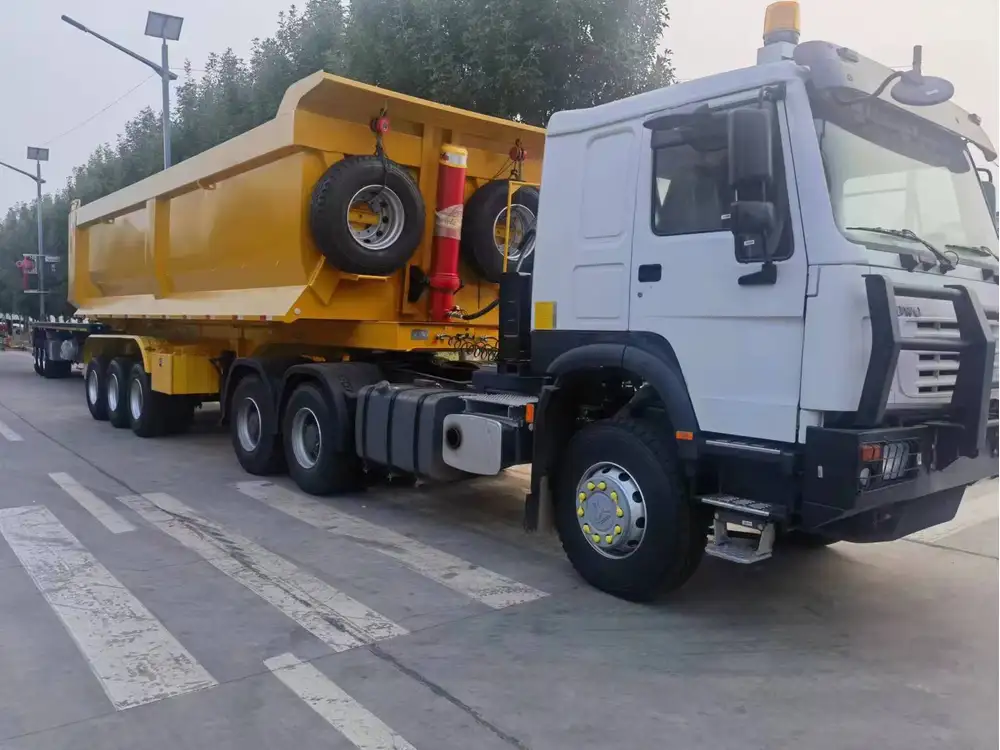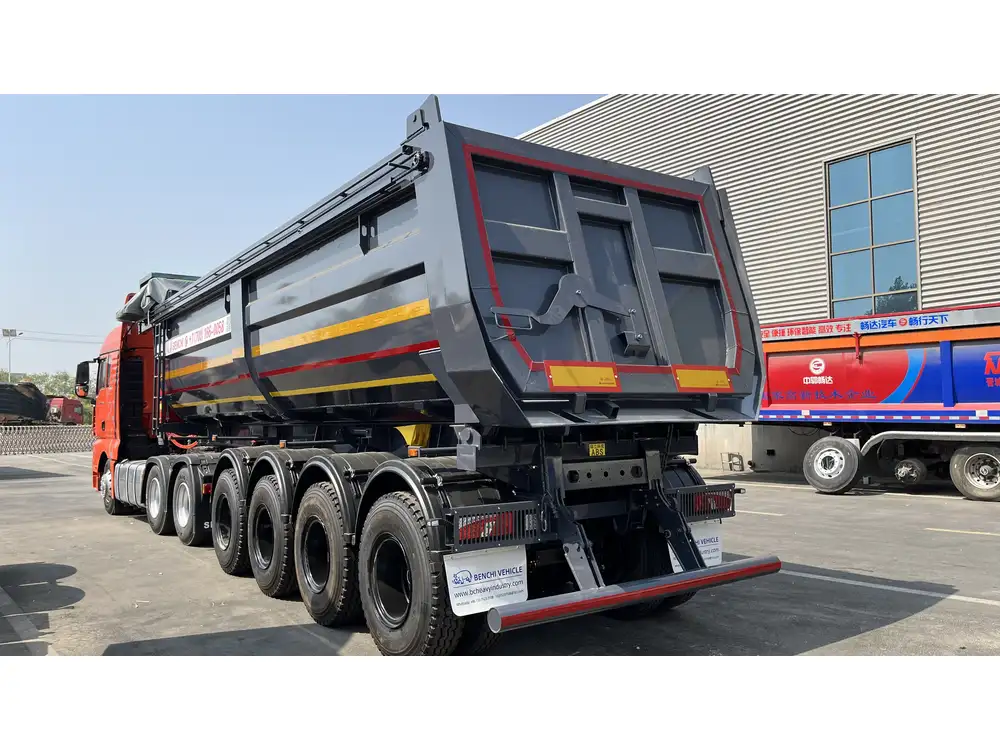When it comes to transporting fuel, the efficiency and capacity of tanker trucks play a crucial role in logistics and supply chain management. The question of “how much gas does a tanker truck hold” is critical for businesses involved in fuel transportation and distribution. This comprehensive guide delves into the various dimensions and metrics of tanker truck capacities, offering insights that can aid in decision-making for manufacturers, fleet managers, and operators.
The Anatomy of a Tanker Truck
Before we can delve into the specifics of gas capacity, it’s essential to understand the structure of a tanker truck. A typical tanker truck consists of several key components:
| Component | Description |
|---|---|
| Tank | The cylindrical container where the fuel is stored. |
| Chassis | The frame that supports the tank and includes wheels for mobility. |
| Pump System | Mechanism for loading and unloading the fuel. |
| Safety Valves | Essential for preventing over-pressurization of the tank. |
| Thermometer | Monitors the temperature of the fuel, ensuring safety during transport. |
Variants of Tanker Trucks
There are various types of tanker trucks, each designed for specific capacities and purposes. The common varieties include:
- Standard Fuel Tankers: Typically used for transporting gasoline or diesel, these hold up to 8,000 gallons.
- Large Capacity Tankers: For extensive operations, these trucks can carry from 10,000 to 11,600 gallons.
- Specialized Tankers: Designed for transporting chemicals or liquid food products, these may have varying capacities based on regulatory standards.

Common Capacities of Tanker Trucks
Understanding the holding capacity of tanker trucks is paramount. Here’s a detailed breakdown:
| Tanker Type | Capacity in Gallons | Capacity in Liters |
|---|---|---|
| Standard Fuel Tanker | 8,000 – 10,000 | 30,280 – 37,850 |
| Large Capacity Fuel Tanker | 10,000 – 11,600 | 37,850 – 43,974 |
| Specialized Chemical Tanker | 5,000 – 10,000 | 18,927 – 37,850 |
| Bulk Liquid Tanker | 12,000 – 15,000 | 45,424 – 56,781 |
Influencing Factors on Tanker Capacity
The capacity of a tanker truck may be influenced by several factors including:
- State Regulations: Different states or countries have laws regulating the maximum allowable capacity for tanker trucks.
- Design Specifications: Custom designs can alter standard capacities for specific logistical requirements.
- Type of Liquid Transported: The density and viscosity of the liquid can affect how much can be loaded safely.
How Tanker Capacity Affects Operational Efficiency
Understanding the capacity of tanker trucks is integral to optimizing distribution strategies. Here are several considerations:

Cost Efficiency
Maximizing the load per trip can significantly reduce transportation costs. For instance, consider a scenario where a truck with a capacity of 10,000 gallons makes regular trips:
- If it hauls fuel at full capacity, it could save an estimated $500 to $1,000 on hauling costs versus a smaller load.
- Fewer trips mean lower labor costs and reduced wear and tear on the vehicle.
Time Management
Higher capacity leads to fewer trips, which coordinates better delivery schedules and improves turnaround times. This is particularly crucial in industries where just-in-time delivery is essential.
Environmental Impact
By maximizing loads, a fleet can minimize fuel consumption and carbon emissions per gallon transported. This efficiency is increasingly important in an era focused on sustainability.

Safety Considerations in Fuel Transportation
Transporting gas safely is paramount. Adhering to regulations and understanding the characteristics of gas and the tanker’s structural design is critical in preventing accidents.
Structural Integrity
Tankers must meet rigorous design standards to withstand the pressures associated with transporting volatile substances. The materials used in construction must be resistant to corrosion and punctures.
Regulation Compliance
Familiarity with regulations, such as those imposed by the Department of Transportation (DOT) or the Environmental Protection Agency (EPA), is fundamental for ensuring safety during operations. Compliance measures could include:
- Regular tank inspections
- Technological upgrades for monitoring
- Employee training in safety protocols

Tips for Managing Tanker Truck Operations
Managing a fleet of tanker trucks involves meticulous planning and operational strategies to ensure safety, compliance, and efficiency. Here are some essential tips:
Leverage Technology
Advanced telematics systems can be utilized to monitor fuel levels, track routes, and even predict maintenance needs. This leads to more informed decision-making and optimized operations.
Route Planning
Effective route planning can reduce travel time and fuel consumption. By utilizing software for logistics, operations can be streamlined, and optimal routes can be established.

Staff Training
Regular training for operators on the specifics of tanker handling and safety procedures can reduce the risk of accidents and leaks. This is not only a compliance measure but also a best practice for operational efficiency.
FAQs on Tanker Truck Capacity
1. How do I determine what size tanker truck I need for my business?
Choosing the right size depends on several factors such as the type of liquid being transported, the distance of travel, and the demand for fuel in your operational area. It might be beneficial to conduct an analysis of your operational needs and forecasted demand.

2. Are there regulations regarding the maximum capacity for tanker trucks?
Yes, various federal and state regulations outline the maximum allowable capacities based on the type of liquid being transported and the vehicle specifications. Consult the DOT regulations relevant to your area.
3. Can a tanker truck be modified for increased capacity?
While modifications can be made, they must comply with regulatory standards to ensure safety and legality. Customizations should be approached carefully and ideally under the guidance of legal and engineering experts.
4. What are the key safety checks for tanker trucks before operations begin?
Critical safety checks include:
- Reviewing the structural integrity of the tank.
- Checking safety valves and emergency shut-off systems.
- Conducting pump tests to ensure they are operating correctly.
- Inspecting tires and brakes for safety.

Conclusion
Understanding the intricacies of tanker truck capacities is essential for businesses engaged in the fuel transportation sector. By evaluating gas capacities and implementing effective operational strategies, we can significantly enhance efficiency, cost-effectiveness, and safety. Whether you’re managing a small fleet or a large transport operation, recognizing the factors influencing tanker truck capacity is vital for optimizing your logistics and ensuring a sustainable future in fuel transportation.
In the ever-evolving landscape of transportation, staying informed and adaptable will not only serve operational needs but also position businesses favorably in a competitive marketplace.



